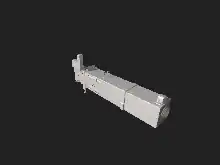
Chronocinematograph is an astronomical instrument consisting of a film camera, chronometer and chronograph.[1]: 15 [2]: 284–285 The device records images using a more precise timetable for observing an eclipse. It was invented in 1927 by a Polish astronomer, mathematician and geodesist Tadeusz Banachiewicz for observing total solar eclipses.[1]: 15 [2]: 284–285 During the same year, Banachiewcz used his device for solar observations in Lapland (Sweden), then in USA (1932) and Greece, Japan and Siberia (1936).[1]: 15 [2]: 286
The invention enhanced the precision for determining the time of an eclipse, due to more precisely timed photos of Baily's beads,[1]: 15 [2]: 284–285 and quantifying the duration of totality. This could not have been observed as closely as before due to the brightness of the sun.[1]: 15 [2]: 284–286
References
- 1 2 3 4 5 Zawada, Anna Karolina (2004). Observo ergo sum Tadeusz Banachiewicz 1882 - 1954. Kraków: Museum of Jagiellonian University. pp. 15–16. ISBN 83-921397-0-4. Archived from the original on 2019-02-10.
- 1 2 3 4 5 Bujakiewicz-Korońska, Renata; Koroński, Jan (1016). "The life of Tadeusz Banachiewicz and his scientific activity" (PDF). Studia Historiae Scientiarum. 15 (15): 275–300. doi:10.4467/23921749SHS.16.011.6154. Archived from the original on 2019-02-10. Retrieved 2017-03-13.